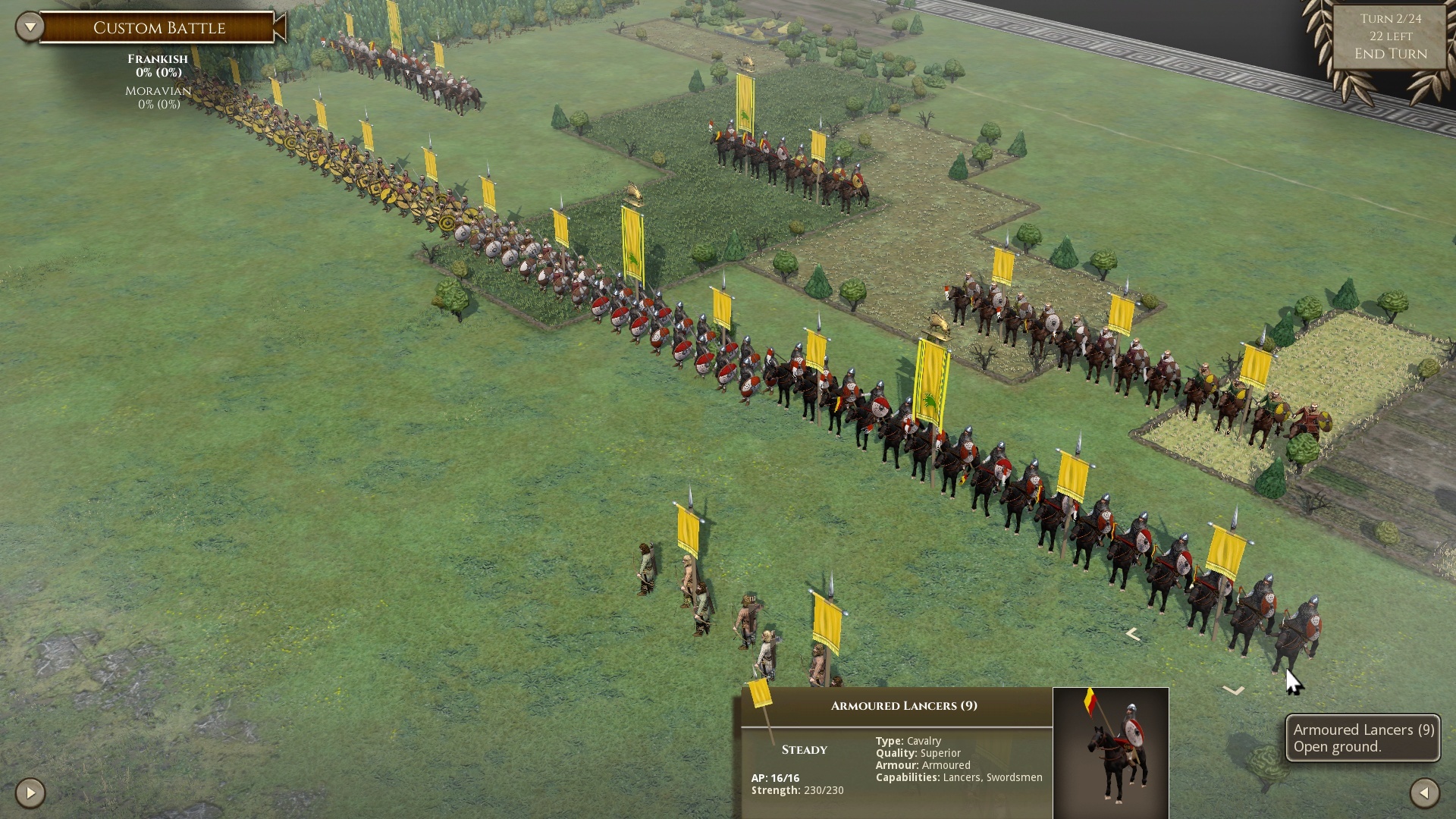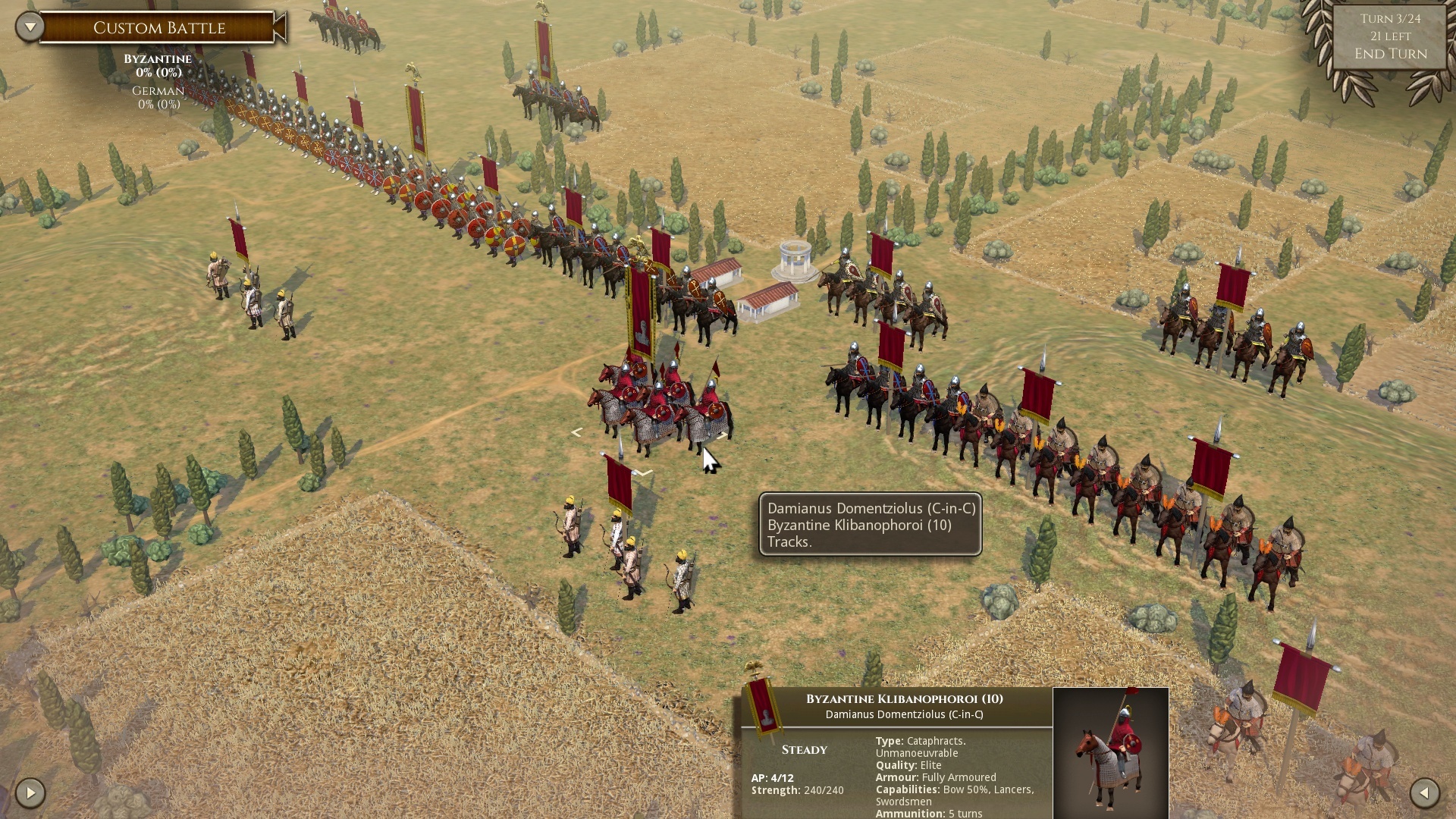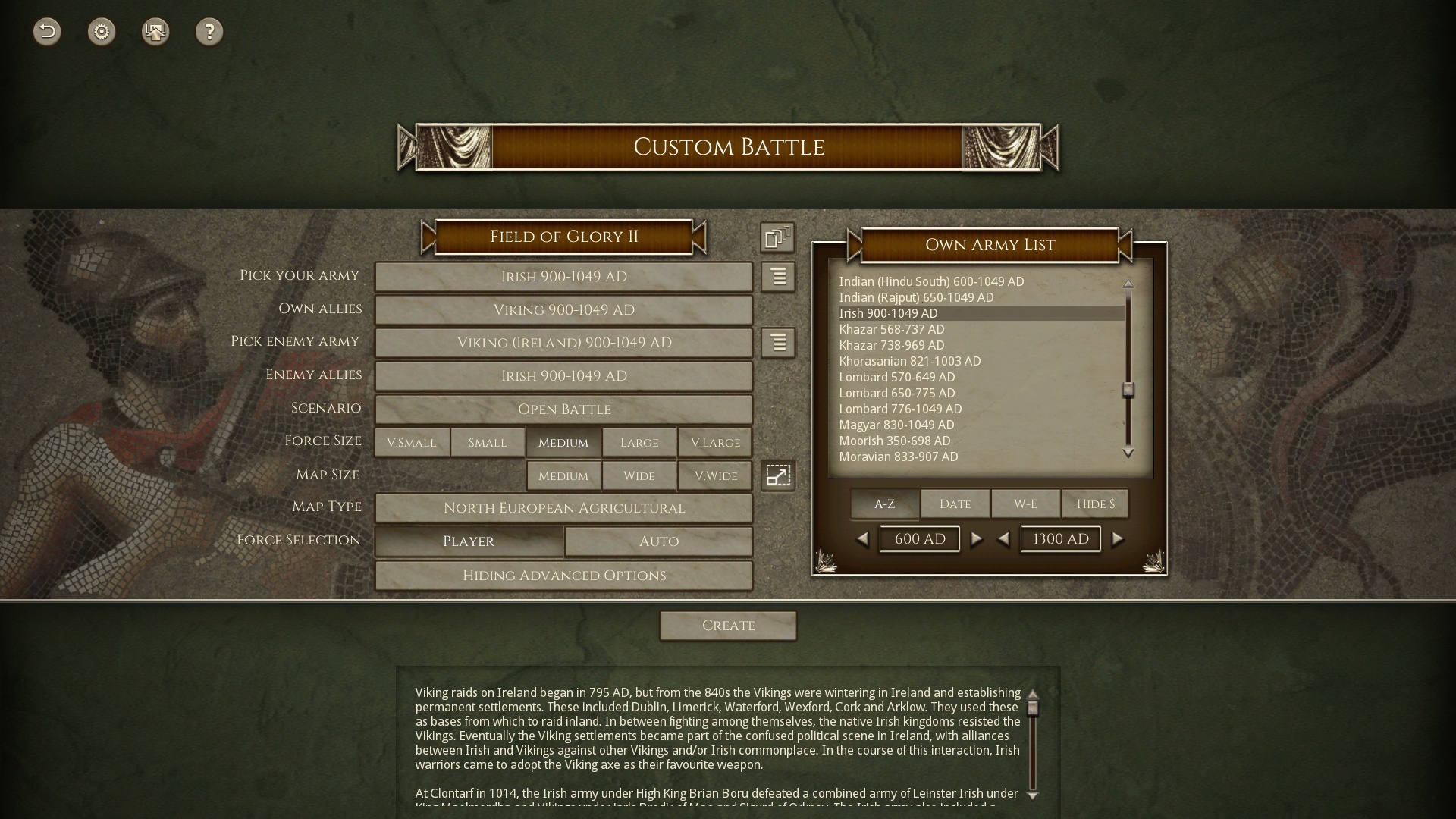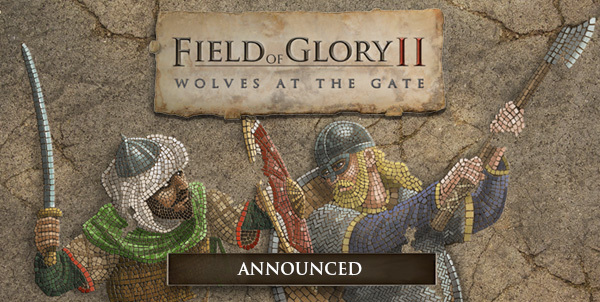
May 28, 2019
Field of Glory II - SlithFox

Wolves at the Gate adds 55 new units to the game. Here we are going to focus on just a few of these.
Vikings
The archetypal Viking battle formation was the shieldwall (skjaldborg), comprising men armed with various combinations of sword, axe, throwing spears and thrusting spears. Archers, if present, would form up in the rear ranks. The overall effect of this formation is represented by the Offensive Spearmen close combat capability.
Huscarls are the well-equipped hearth-companions of the Viking jarls. They are armoured and of Superior quality. The famous two-handed Viking axe came into use from about 900 AD. Before that date, Huscarls’ combat capability is rated as Offensive Spearmen, after that as Heavy Weapon.
The ordinary Viking warriors mostly lack armour, but derive protection from the overlapping shields of the shieldwall.
Berserkers were a class of warrior who habitually worked themselves up into a frenzy in battle, becoming immune to fear and fighting with the strength of madmen, heedless of wounds. They were often used as chieftain's bodyguards or placed in the front of the shieldwall, but sometimes fought as a separate assault force. Such Berserker units are represented by small but Elite wedges of Impact Foot, Swordsmen.
Vikings often rode to battle on horses, but usually, though not always, dismounted to fight.

Carolingian Franks
By the reign of Charlemagne, lancer cavalry formed the most important arm of the Frankish army. Many were armoured, although there were still plenty who lacked armour. In some of the eastern provinces, cavalry still fought in an older skirmishing style, so have Light Spear instead of Lancers capability.
The role of infantry spearmen was now purely secondary, so they are rated as Defensive Spearmen. When needed, however, the cavalry could and did fight on foot - they are rated as Offensive Spearmen when doing so.

Nikephorian Byzantines
In the reign of the Emperor Nikephoros II Phokas, the Byzantine army was reorganised and went on the offensive.
The permanent standing Tagmatic army was greatly expanded. The Tagmatic cavalry fought in mixed units of lancers and horse archers, softening the enemy up with archery prior to a fierce charge with lances. Part-time Thematic units were organised similarly.
The elite of the army were the Klibanophoroi, who usually fought in one or two wedges, designed to break into the enemy formation, even if this was a spear-armed Rus shieldwall. The men on the outside of the wedge were fully armoured cataphracts. The ones at the front fought with heavy maces. In the middle of the formation were archers.
Skirmishing cavalry were obtained by hiring nomad mercenaries.
The proportion of archers in infantry units was greatly increased, so we rate them as 50% Defensive Spearmen (skoutatoi) and 50% archers.
In 988 Vladimir I of Kiev supplied the Emperor Basil II with 6,000 Varangian (Rus) mercenaries, to assist him in a civil war. The best of these were subsequently formed into a permanent Imperial Guards unit, the Varangian Guard. In a later period these were to become famous for their use of two-handed axes, but in this period they fought as spearmen.

Fatimid Egyptians
The Arab Fatimid Caliphate arose in what is now Algeria in the early 10th century AD. In 969 they conquered Egypt and established Cairo as their new capital. Following this they advanced into Palestine and Syria and came into conflict with the Byzantines.
Their initial forces had relied on armoured lancers and Berber light horse, but by 978 they had begun to field large numbers of “slave-soldiers”. These troops were recruited as slaves but then trained up as soldiers.
Ghilman, though recruited from Turkish or Caucasian slaves, were highly trained armoured horse archers of high status in society. ‘Abid-al-shira, recruited from Sudanese slaves, were trained as heavy infantry fighting with javelins (Light Spear) and swords.
However, the Fatimids still fielded large numbers of Arab lancers, Arab spearmen (rated as Defensive Spearmen) and archers, and Dailami infantry. The latter fought in their own distinctive fashion with heavy javelin and sword – they are rated as Medium Foot, Impact Foot, Swordsmen.

https://store.steampowered.com/app/1004260/Field_of_Glory_II_Wolves_at_the_Gate/














